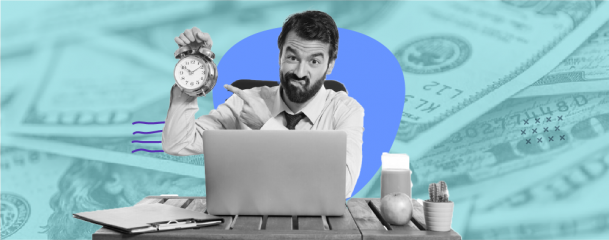1. What Is the Basic Difference Between Benefits, Perks and Rewards
Benefits typically include the mandatory or statutory components of any compensation package for an employee, perks are additional benefits that can be provided if the company chooses to do so, while rewards are handed out based on employee and team performance as part of employee recognition and appreciation initiatives.
2. What Are Employee Benefits?
One way to clarify the difference between benefits, perks and rewards is to think of employee benefits as additional forms of compensation that are enshrined in the employment contract. A company is legally required to provide some of these benefits, while others are voluntary. For example, most workers are offered a certain number of days of paid leave, while only a few will be given stock options.
Bear in mind that what is legally required varies from country to country. For example, in most European countries, there is a statutory minimum for paid leave days. In the US, meanwhile, the government expects all medium and large-sized companies to provide their staff with healthcare insurance – something which is not obligatory in nations that have universal healthcare.
3. Why Are Employee Benefits Important?
Research shows that benefits have a huge impact on whether employees join a company, as well as how long they stay. One study found that 69% of workers said they would choose one business over another purely based on the benefits package available. Through benefits, you can support staff outside of the workplace, thus making them more effective inside of the workplace.
4. Examples of Employee Benefits
4.1. Paid Time Off

The most common type of benefit, paid time off (PTO) is the number of days an employee is entitled to take as holiday per year while still receiving their salary. In some countries, this is a legal requirement. In Australia, for example, full-time staff must be given a minimum of four weeks paid leave. On the other hand, the US has no national law regarding PTO, though on averages businesses offer 10 days paid leave (excluding bank holidays).
4.2. Stock Options
Some publicly traded companies allow employees, especially those in long-term service to purchase stock options, usually at a set price over a specified period. This not only acts as a benefit, but also incentivizes staff to work hard to make the company profitable, as this will then increase the value of their shares. Additionally, stock options can incur less tax than raising incomes.
4.3. Medical Health Insurance
Providing workers with medical health insurance gives them the security of knowing that if they unexpectedly fall ill, they will be able to afford appropriate treatment. This can also be extended to cover a person’s family. Even in countries where universal healthcare exists, companies can choose to offer private health insurance as a benefit to give their staff a better quality of care.
4.4. Worker’s Compensation
Worker’s compensation is given to employees when they are injured or become sick in the workplace. Similar to medical health insurance, it provides a guarantee that being unable to work will not impair earning potential. In many places worker’s comp is a legal requirement, though this varies greatly by nation – and, in the US, by state.
4.5. Pension Plan

Retirement benefits can be a powerful way to retain employees, giving people some certainty about their post-work future. Pension plans are funds that companies pay into on a regular basis, in order to provide financial stability for an employee after they retire. Sometimes, these are purely financed by the company, but other times both employer and employee pay into them, to increase the total sum.
4.6. Maternity/Paternity Leave
Another benefit that is typically mandated by law, maternity/paternity leave is the time allowed off work for a parent to take care of a newborn child. Depending on the country or state, it can range from a few weeks to a few months, and may be either designated solely for the mother or for the father as well. In some places it is paid, whereas elsewhere it is unpaid.
5. What Are Employee Perks?
What is considered a perk depends upon the company, but it can range from free meals to annual getaways. The primary difference between benefits and perquisites is that the former is normally included in a contract and often defined by law, while the latter are nice additional attractions a company may offer to sweeten the deal.
6. Why Employee Perks Are Important?
Another principal difference between benefits, perks and rewards is that you can get as creative as you want with perks. A solid benefits package might be a prerequisite for a person, but attention-grabbing extras can significantly impact a potential hire’s final decision when choosing between several opportunities.
7. Examples of Employee Perks
7.1. Flexible Hours

Giving staff some degree of autonomy in managing their workload can facilitate their childcare needs or other important commitments without hindering productivity. As well as reducing stress, flexible hours also demonstrate that managers trust in a person’s ability to self-manage.
7.2. Remote Working
Post-pandemic, remote working has become an increasingly common perk – one that comes with substantial benefits for a company as well. When staff are allowed to work from home to some degree, absenteeism has been shown to decrease by 41% while productivity rises by 35%.
7.3. Free Lunches, Snacks
Offsetting the cost of something as commonplace as eating is a perennially popular perk. Some companies, such as Google, are famous for offering free food, while other companies like Apple subsidize meals to make them more affordable. If you’re on a budget, however, it might be more economical to offer complementary snacks instead.
7.4. Gym Memberships
Big companies may have in-office gyms, but most businesses looking to boost their employees’ physical well-being will have to rely on providing gym memberships. As with meals, passes to local fitness centers can be offered entirely free or at a subsidized rate. Beyond the workout, exercise has also been shown to improve brain health, too.
7.5. Employee Retreat

Corporate getaways furnish opportunities for teams to relax and bond in a less formal environment. These retreats can involve coaching and seminars, bonding activities, pure leisure or a combination of all three.
7.6. Childcare
Lack of access to affordable childcare is forcing some parents, particularly women, out of the workforce. This is particularly problematic at a time when competition for talent is ferocious. Offering some form of paid childcare payment scheme or even an on-site nursery can give companies the advantage when it comes to new hires and retention.
7.7. Petcare

For some people, their pets are their children. Pet ownership has grown in many countries during the pandemic, resulting in more people voicing a desire for pet-related perks. These can come in the form of pet insurance payments or an office environment that has a more open-minded bring-your-pet-to-work policy.
8. What Are Employee Rewards?
Rewards are a way of recognizing an employee’s efforts. They can be related to reaching a specific milestone or a more general pat on the back for consistently good effort. The difference between benefits, perks and rewards is that rewards are normally the result of performance, rather than being used to attract new hires.
It’s worth noting here that there is a very slight difference between reward and incentive. An incentive is something that motivates an employee to achieve success. A reward can be an incentive, but it can also be an unexpected or unlooked for recognition of someone’s labors.
9. Why Employee Rewards Are Important?
Employee rewards inspire staff to work harder. When you’re trying to separate the difference between benefits, perks and rewards, you should think of rewards as the icing on the cake. They give individuals a tangible sense of achievement and show them that managers appreciate their drive and focus. A culture of recognition has been shown to increase engagement across the board, resulting in better retention and happiness. A big difference between perks and incentives is that perks may attract new hires, but rewards will often have a greater role in keeping them in a role.
10. Examples of Employee Rewards
10.1. Performance-based Bonuses
Performance-based bonuses are one of the most popular of all rewards and benefits for employees because they can be directly tied to targets or KPIs. Some companies set a specific bonus amount for reaching certain milestones; others tie bonuses to a percentage of sales or profits.
10.2. Gifts and Hampers

Rather than a straight cash reward, another option is to send out gifts (such as branded items like cups or T-shirts) or hampers (which can be customized with different contents). These can be presented as annual thank yous to all staff or as prizes for particular contributions.
10.3. Recognition in Social Media Platforms
Not all employee rewards need to cost money. Posting about successes on social media is also a nice way to celebrate staff and show them that their input is valued. The public format can also incentivize others in the team to work harder, in hopes of being similarly recognized.
10.4. Award Titles
Awards are a core pillar of employee recognition. These accolades can be given for long-standing service, work anniversaries or for best performance in specific categories (e.g., teamwork, sales, organization).
10.5. Gift Cards
The biggest benefit of gift cards is that your staff can choose their own reward, to a certain extent. For instance, an Amazon gift card means employees can choose from the bounty that the e-commerce store has to offer, while a Ticketmaster voucher opens up a word of concerts and performances.
10.6. Promotions
If someone consistently performs well, it’s worth considering a promotion. Having a clear career progression pathway is useful with regards to staff retention and shows everyone that the company rewards hard work.
10.7. Appreciation Letter
One of the most personalized ways you can reward an employee is with a thoughtful appreciation letter. For maximum impact, keep the contents concise and make sure to be specific about why you are taking the time to recognize the individual.
11. FAQs
11.1. Are benefits included in salary?
Benefits are not normally included in the salary itself. Instead, they supplement a person’s wage as part of the overall hiring package.
11.2. Does perk mean benefit?
The distinction between benefits and perks meaning may appear subtle, but it’s actually quite simple: benefits are at the heart of an employment contract, while perks are additional extras that a company may provide as the cherries on top.
11.3. Why do companies offer perks?
Companies arrange perquisites to differentiate themselves from other employers. A significant difference between benefits, perks and rewards is that while the type of benefits that a business can offer are generally fairly standard, the perks can vary widely.
11.4. What are the best rewards for employees?
The best way to find out how your employees prefer to be rewarded is to ask them. Whether or not you opt for performance-related bonuses or award titles may also be dependent on the budget you have available.
11.5. What is the basic difference between benefits, perks and rewards ?
Benefits typically include the mandatory or statutory components of any compensation package for an employee, perks are additional benefits that can be provided by the and if the company chooses to do so while rewards are handed out based on employee and team performance as part of employee recognition and appreciation.
 Interested in Virtual Team Building Events?
Interested in Virtual Team Building Events?





















